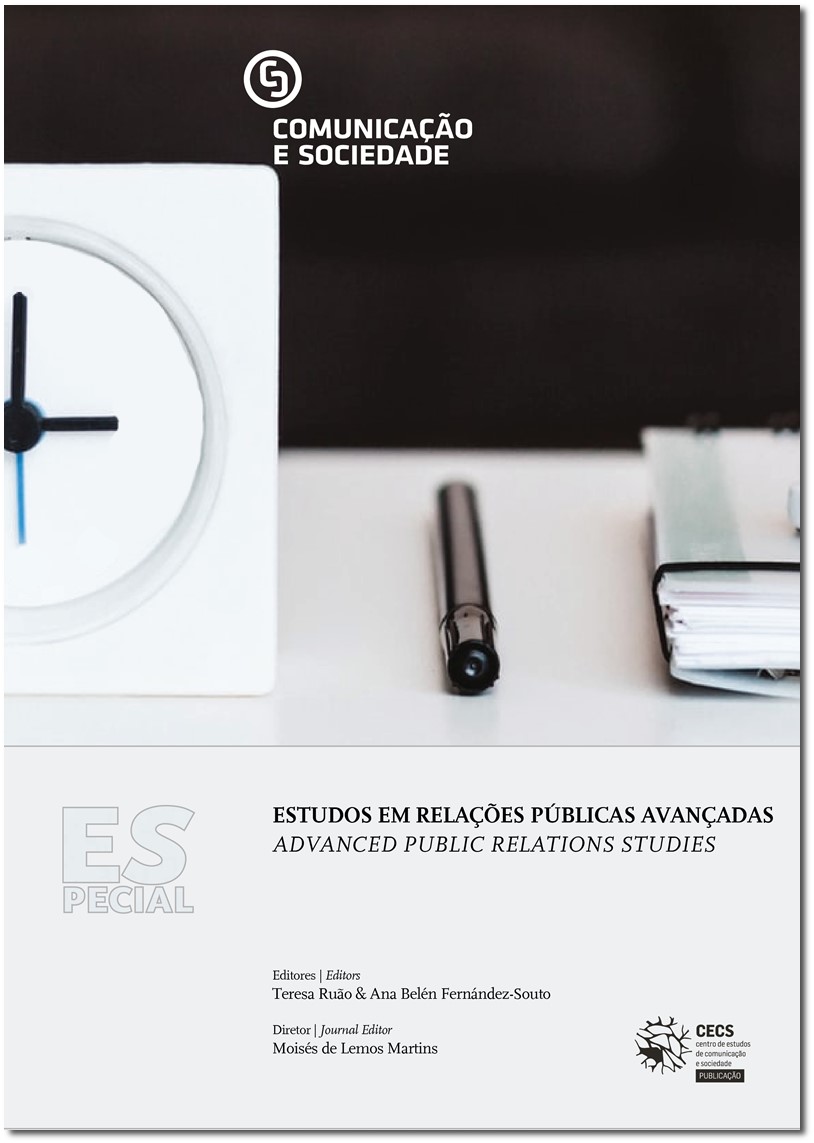Public relations strategies in social media: analysis of campaigns for social change in the education sector in Spain and Portugal
DOI:
https://doi.org/10.17231/comsoc.0(2020).2746Keywords:
public relations, social media, nonprofit organizations, education campaigns, social development, changeAbstract
The present paper discusses the use of social media when campaigning for social change in the education sector. The main focus is the analysis of the public relation strategies in use: the disclosure of real testimonials and the development of storytelling, as contents that enhance affinity and engagement towards social change. For the purpose of the analysis, two case studies were developed that discuss the campaigns of two non-governmental organizations in the educational sector, via social media: #LeonorDejaLaEscuela by Fundación Secretariado Gitano in Spain, from 2015, and #Amigo-Bagos-Douro by Bagos d’Ouro in Portugal, from 2017. The first one was implemented mainly on Twitter – one of the most well-known social network in use today –, while the other one used WhatsApp – the most popular mobile messenger –, as means of campaigning for broader access to education. The study aimed to answer the following research question: what is the role of social media in nonprofit organizations public relations strategies? This equation expressed two scientific objectives: (1st) to deepen the knowledge on the ability of social media to produce communicative interaction; and (2nd) to (re)frame public relations within communication for development strategies. The analysis demonstrates that social media have greatly contributed to change the way public relations strategies within the third sector are conducted. In fact, social media may play a key role in nonprofit communication: by lobbying for social causes, creating alliances, raising money, mobilizing volunteers, engaging traditional media and community relations, or by advocating for policy reform.
Downloads
References
Auger, G. A. (2013). Fostering democracy through social media: evaluating diametrically opposed nonprofit advocacy organizations’ use of Facebook, Twitter, and YouTube. Public Relations Review, 39(4), 369-376.
Bartholomew, D. (2010, 12 de maio). The digitization of research and measurement [Post em blogue]. Retirado de http://metricsman.wordpress.com/2010/05/12/the-digitization-of-research-and-measurement/
Briones, R. L., Kuch, B., Liu, B. F. & Jin, Y. (2011). Keeping up with the digital age: how the American Red Cross uses social media to build relationships. Public relations review, 37(1), 37-43. https://doi.org/10.1016/j.pubrev.2010.12.006
Cho, M., Schweickart, T. & Haase, A. (2014). Public engagement with nonprofit organizations on Facebook. Public Relations Review, 40(3), 565-567. https://doi.org/10.1016/j.pubrev.2014.01.008
Ciszek, E. L. (2015). Bridging the gap: mapping the relationship between activism and public relations. Public Relations Review, 41(4), 447-455. https://doi.org/10.1016/j.pubrev.2015.05.016
Curtis, L., Edwards, C., Fraser, K. L., Gudelsky, S., Holmquist, J., Thornton, K. & Sweetser, K. D. (2010). Adoption of social media for public relations by nonprofit organizations. Public Relations Review, 36(1), 90-92. https://doi.org/10.1016/j.pubrev.2009.10.003
Fombrun, C.J., Gardberg, N.A. & Barnett, M.L. (2000). Opportunity platforms and safety nets: corporate citizenship and reputational risk. Business and Society Review, 105(1), 85-106. https://doi.org/10.1111/0045-3609.00066
Freberg, K., Graham, K., Mcgaughey, K. & Freberg, L. A. (2011). Who are the social media influencers? A study of public perceptions of personality. Public Relations Review, 37(1), 90-92. https://doi.org/10.1016/j.pubrev.2010.11.001
Grunig, L., Grunig, J. & Dozier, D. (2002). Excellent public relations and effective organisations: a study of communication management in three countries. Mahwah, NJ: Lawrence Erlbaum Associates.
Kent, M. L. & Taylor, M. (1998). Building dialogic relationships through the world wide web. Public relations review, 24(3), 321-334. https://doi.org/10.1016/S0363-8111(99)80143-X
Liu, F. & Maitlis, S. (2010). Nonparticipant observation. In A. J. Mills; G. Durepos & E. Wiebe (Eds.), Encyclopedia of case study research (pp. 610-612). Thousand Oaks, CA: SAGE Publications.
Lovejoy, K., Waters, R. D. & Saxton, G. D. (2012). Engaging stakeholders through Twitter: how nonprofit organizations are getting more out of 140 characters or less. Public Relations Review, 38(2), 313-318. https://doi.org/10.1016/j.prubev.2012.01.005
Marktest. (2019). Os portugueses e as redes sociais 2019. Retirado de https://www.marktest.com/wap/private/images/Logos/Folheto_Portugueses_Redes_Sociais_2019.pdf
Malka, V., Ariel, Y. & Avidar, R. (2015). Fighting, worrying and sharing: operation ‘protective edge’as the first WhatsApp war. Media, War & Conflict, 8(3), 329-344. https://doi.org/10.1177/1750635215611610
Seo, H., Kim, J. Y. & Yang, S. U. (2009). Global activism and new media: a study of transnational NGOs’ online public relations. Public Relations Review, 35(2), 123-126. https://doi.org/10.1016/j.pruveb.2009.02.002
Twitter Marketing. (2013, 11 de fevereiro). New compete study: primary mobile users on Twitter [Post em blogue]. Retirado de https://blog.twitter.com/en_us/a/2013/new-compete-study-primary-mobile-users-on-twitter.html
Waters, R. D. (2009). The use of social media by non-profit organizations: an examination from the diffusion of innovations perspective. In t. Dumova & R. Fiordo (Eds.), Handbook of research on social interaction technologies and collaboration software: concepts and trends (pp. 473-485). Hershey: IGI Publishing.
Waters, R. D. & Jamal, J. Y. (2011). Tweet, tweet, tweet: a content analysis of nonprofit organizations’ Twitter updates. Public Relations Review, 37(3), 321-324. https://doi.org/10.1016/j.pruveb.2011.03.002
Wright, D. & Hinson, M. (2017). Tracking how social and other digital media are being used in public relations practice: a twelve-year study. Public Relations Journal, 11(1), 1-30.
Downloads
Published
How to Cite
Issue
Section
License

This work is licensed under a Creative Commons Attribution-NonCommercial 4.0 International License.
Authors own the copyright, providing the journal with the right of first publication. The work is licensed under a Creative Commons Attribution 4.0 International License.












